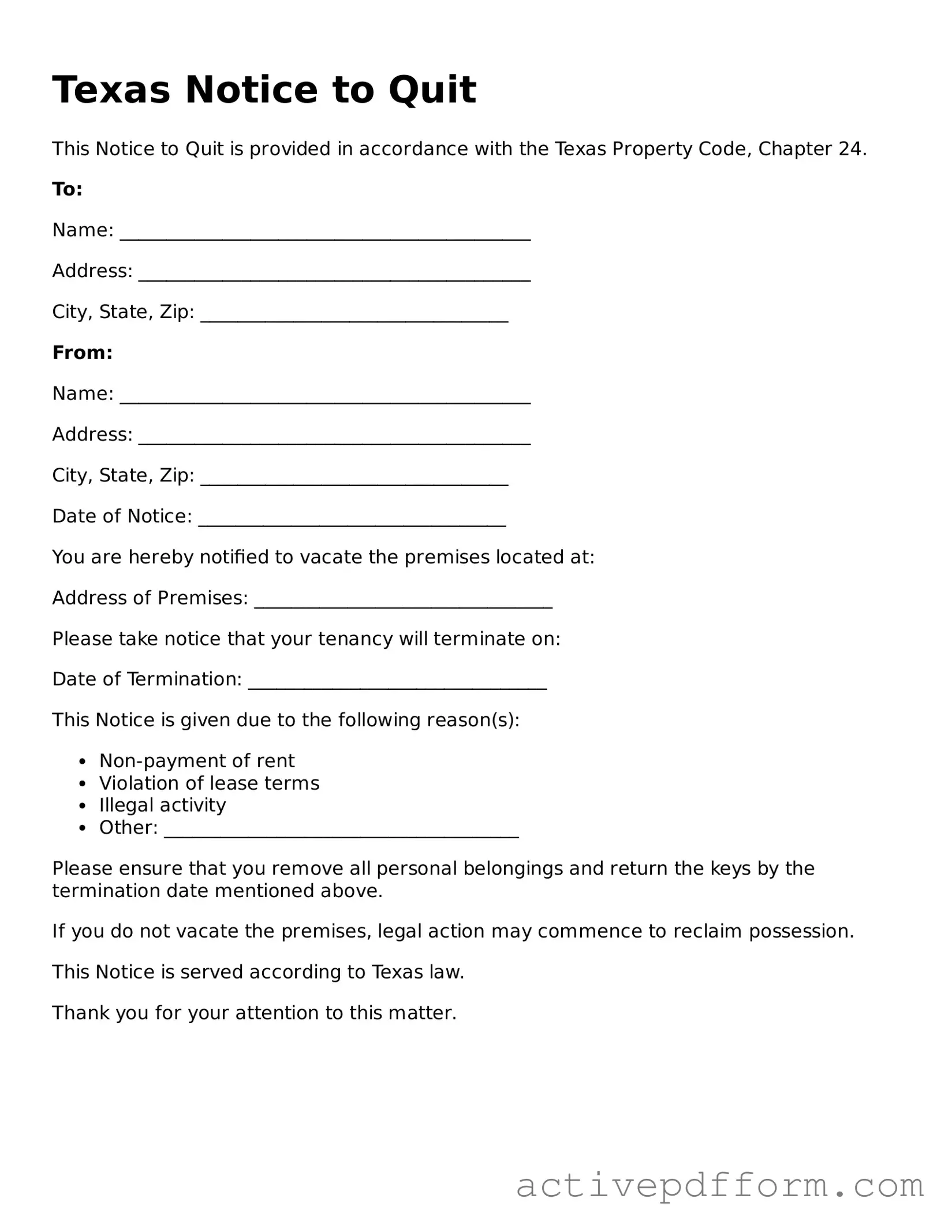Texas Notice to Quit
This Notice to Quit is provided in accordance with the Texas Property Code, Chapter 24.
To:
Name: ____________________________________________
Address: __________________________________________
City, State, Zip: _________________________________
From:
Name: ____________________________________________
Address: __________________________________________
City, State, Zip: _________________________________
Date of Notice: _________________________________
You are hereby notified to vacate the premises located at:
Address of Premises: ________________________________
Please take notice that your tenancy will terminate on:
Date of Termination: ________________________________
This Notice is given due to the following reason(s):
- Non-payment of rent
- Violation of lease terms
- Illegal activity
- Other: ______________________________________
Please ensure that you remove all personal belongings and return the keys by the termination date mentioned above.
If you do not vacate the premises, legal action may commence to reclaim possession.
This Notice is served according to Texas law.
Thank you for your attention to this matter.
